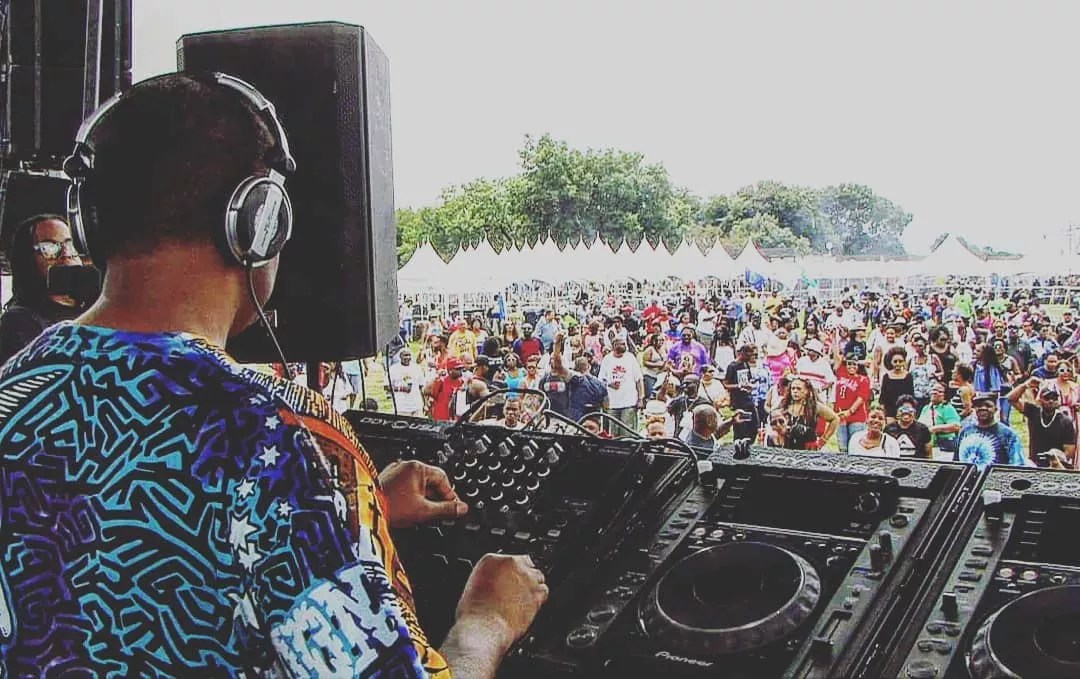
Jesse Saunders

Audio By Carbonatix
Denver DJs are battling over the definition of “house music.” They have different opinions about the purity of its sound, its exact origin, and the ethos and makeup of its culture.
But if there’s anyone who can really define house music, it’s Jesse Saunders, a man who has been there since the advent of the genre. When he first played, house didn’t even have a name; the label wasn’t applied until after his single “On & On” was released in 1984. Saunders, who plays Larimer Record Cafe on Sunday, July 11, has also written two books on the subject: House Music: The Real Story and In Their Own Words.
“People don’t understand the nature of what house music is,” Saunders says. “[Even from] its inception, [house music] was a mixture of a bunch of things, so to try to categorize it down to one single element is very difficult. But that seems like what people have been trying to do forever, and it absolutely makes no sense. Why can’t it be what it is? Why does it have to be one single thing? If it starts with the four-on-the-floor kick, the hi-hat on the three, and the untz, then that’s house music. Whether it’s tech-house or trance-house, it’s all house music. And to try and take it out of that lump and say it’s something else is ridiculous.”
This “mixture of a bunch of things” included samples of many then-contemporary styles of music that were given more oomph by the introduction of novel studio equipment. In the late ’70s and early ’80s, Chicago radio and club DJs, such as Saunders, Farley “Jackmaster” Funk, Frankie Knuckles and Ron Hardy, spun styles like funk, disco, rock, dub and electronic pop songs. They cut and spliced, mixing genres, on reel-to-reel tape and modified tracks with effects, drum machines and synthesis to create a fresh, heavy-hitting, futuristic sound.
One of the places they played, the Warehouse, was a club predominantly for gay Black and Latino men. But Saunders says that this is where people get confused about the history, as things weren’t as they seemed at the Warehouse.
“It’s obvious that the term [house music] is the shortening of ‘the Warehouse,'” he explains. “But what was played at the Warehouse and what house music is are totally different. What was played at the Warehouse was disco. There was no house music when it was up and running.”
Adds Saunders: “The Warehouse was built as a gay club. It wasn’t meant for straight people at all. We’re talking the ’70s. When you’re young, Black, Latino and gay, you have no place in Chicago, because Chicago is one of the most segregated cities in the country, if not the world. Nobody wants you in their club. Nobody wants you partying. So they built their own…just for gay men, not even gay women.”
However, as the popularity of the sound grew, so did the diversity of its clientele.
The Warehouse closed in 1983, a year before Saunders released “On & On,” which became the first official “house” track. By this point, iterations of the Warehouse’s sound had been brought to regional popularity by a melding of gay and straight cultures.
“When the Warehouse became popular, it was because straight women would go there, because they got tired of being hit on by guys, and they knew if they went to a gay club, they wouldn’t be hit on,” Saunders recalls. “So what happened? When pretty girls went to the gay club, straight guys would go. And that was kind of the demise of the Warehouse, believe it or not.
“Robert Williams, the founder, has a section in [In Their Own Words] saying that when all the straight kids from the South Side started coming, their parents would start looking for them, because they were teenagers, and this started to run all the gay guys out. Even Frankie [Knuckles] had a quote in a newspaper around that time saying how he was upset that gay culture was being infiltrated by straight people. … However, it was still pretty tolerant in those days,” he continues.
“Sure, as a straight guy, you would have to get used to it, in a way, because it wasn’t something you were used to. But if you were dating a girl, and she was like, ‘Come to the Warehouse with me,’ you’d probably be hesitant at first, but you figure she’ll be with you, so it’ll be okay. But then when you get there, you realize how easy-going it is, and not the homophobic thing that people who don’t know anything about the culture believe.
“However, if it wasn’t for these girls, house music probably never would have happened,” Saunders concludes. “It was their desire to get out of the clubs where guys would hit on them. And that’s what led everyone to those clubs.”
Jesse Saunders plays from noon to 9 p.m., Sunday, July 11, at Larimer Records Cafe, 1445 Larimer Street, as part of his We Are Family EP release tour. Tickets are $20 to $40 and available at Eventbrite. Purchase We Are Family on Traxsource.